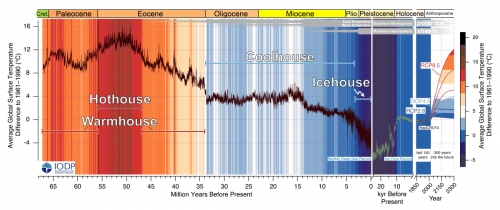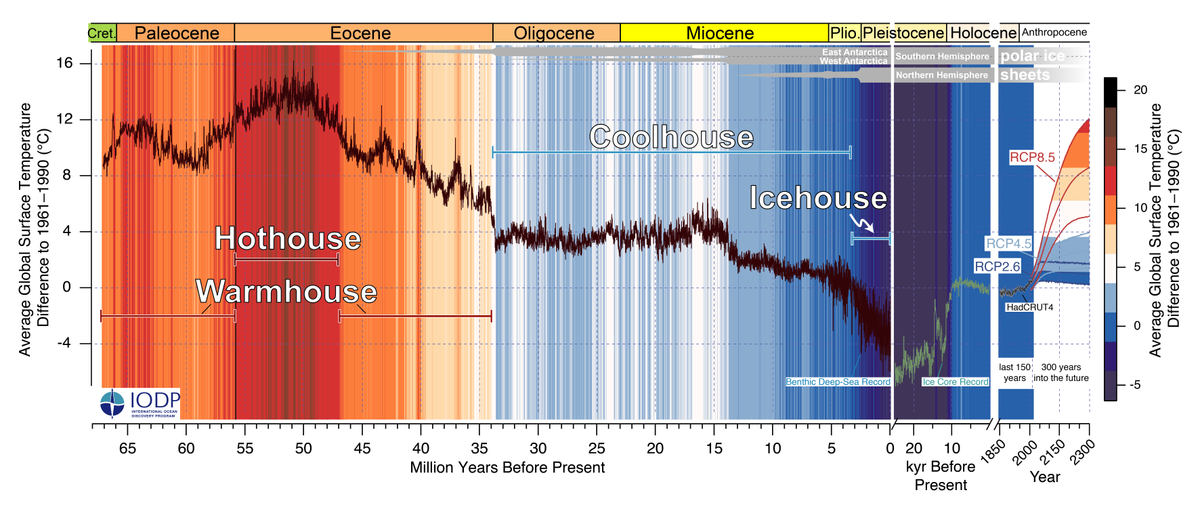profile/19161598514915903.jpg
Thankgodma

Kayleigh McEnany Has Crossed A Line
~3.4 mins read
(CNN)Every single White House press secretary faces his or her own moment of truth on the job. Jerald terHorst, for example, resigned after just one month because he could not live with President Gerald Ford's decision to pardon his predecessor, President Richard Nixon.
Joe Lockhart
Joe Lockhart
Choosing when to take a stand, and what to reveal to the public are not always straightforward decisions. There are, for example, times when releasing the operational details of the military puts lives at risk. It begs the question: What's more important, telling the truth or protecting lives? Jody Powell faced that decision under Jimmy Carter and decided saving lives trumped telling the press the truth during the Iranian hostage crisis.
I faced my own test early in my tenure as press secretary. As the House opened impeachment hearings on then-President Bill Clinton based on the Starr report, I was faced with the daily decision of how to answer questions about the President's behavior.
Not knowing the full extent of what had happened, I chose not to contest the details in the report from the podium even though for many that seemed to be a confirmation of the allegations.
Press Secretary Kayleigh McEnany faced her moment of reckoning in the briefing room on Wednesday, when reporters confronted her about the recordings, released by veteran journalist Bob Woodward, in which President Trump acknowledged in early February that the coronavirus was airborne and deadlier than the flu, even as he publicly dismissed concerns about the virus and called it the Democrats' "new hoax." In March, Trump told Woodward that he intentionally downplayed the dangers of the virus, saying, "I always wanted to play it down. I still like playing it down, because I don't want to create a panic."
Trump damns himself with his own words
Trump damns himself with his own words
McEnany failed on an epic scale in her response. She did not provide context for Trump's statements. Instead, she perpetuated the lies even the President himself admitted to Woodward on tape.
She also tried to pass off Trump's comments as a sign of good leadership, saying, "So this President does what leaders do ... stay calm and resolute at a time when you face an unsurmountable challenge." But real leadership is telling the truth and taking responsibility for it. Only then can the American public trust that the President is looking out for their interests, not just his own.
When asked directly if the President had lied to the American public, McEnany had the gall to say, "The President has never lied to the American public on Covid."
That is patently false. The President has repeatedly lied to the American people about the coronavirus and the government's handling of the pandemic. He is now lying about lying. By claiming otherwise, McEnany reneged on the promise she made to reporters on her first day as press secretary when she said she would never lie to them.
Woodward can't be blamed for withholding revelations about Trump's early handling of the pandemic
Woodward can't be blamed for withholding revelations about Trump's early handling of the pandemic
In doing so, McEnany has destroyed her own personal credibility and fatally injured her ability to speak for the President, and more importantly, for the United States of America. Given her track record, foreign allies can't rely on what she says at the White House podium. This poses a national security risk to the United States.
To be fair, McEnany was caught between a rock and a hard place. But the press secretary works for both the President and the American people, providing a vital link between the two. The only appropriate response in this case, was to say, "The President's word speaks for itself. I am not going to parse them or interpret them for you." That's one way to maintain credibility while sending a clear signal the President is not telling the truth.
McEnany, however, has shown she is more interested in defending the President than informing the public, and her only recourse now is to resign.
The public has a right to question whether the President is trustworthy and honest. And while the press secretary is not an elected official, whoever inhabits the role should be careful to protect his or her own credibility. Without it, the press secretary becomes nothing more than a propagandist instead of a public servant.
By saying the President has never lied to the American public, her tenure as Press Secretary has effectively come to an end -- and her role as a state propagandist has been confirmed.
profile/19161598514915903.jpg
Thankgodma

Earth Barreling Towards Hothouse States Not Seen In 50 Million Years
~18.9 mins read
Record goes back to the dinosaur extinction.
 A climate map showing the last 66 million years of Earth's history. The next 300 could be unlike anything we've ever seen. (Image credit: Westerhold et al., CENOGRID)
A climate map showing the last 66 million years of Earth's history. The next 300 could be unlike anything we've ever seen. (Image credit: Westerhold et al., CENOGRID)Sixty-six million years ago, after a massive asteroid hit Earth with the explosive energy of roughly 1 billion nuclear bombs, a shroud of ash, dust and vaporized rock covered the sky and slowly rained down on the planet. As plant and animal species died en masse, tiny undersea amoebas called forams continued to reproduce, building sturdy shells out of calcium and other deep-sea minerals, just as they had for hundreds of millions of years. When each foram inevitably died — pulverized into seabed sediment — they kept a little piece of Earth's ancient history alive in their fossilized shells.
For decades, scientists have studied those shells, finding clues about the ancient Earth's ocean temperatures, its carbon budget and the composition of minerals spilling through the air and seas. Now, in a new study published today (Sept. 10) in the journal Science, researchers have analyzed the chemical elements in thousands of foram samples to build the most detailed climate record of Earth ever — and it reveals just how dire our current climate situation is.
The new paper, which comprises decades of deep-ocean drilling missions into a single record, details Earth's climate swings across the entire Cenozoic era — the 66 million-year period that began with the death of the dinosaurs and extends to the present epoch of human-induced climate change. The results show how Earth transitioned through four distinct climate states — dubbed the Warmhouse, Hothouse, Coolhouse and Icehouse states — in response to changes in the planet's orbit, greenhouse gas levels and the extent of polar ice sheets.
The zig-zagging chart (shown above) ends with a sobering peak. According to the researchers, the current pace of anthropogenic global warming far exceeds the natural climate fluctuations seen at any other point in the Cenozoic era, and has the potential to hyper-drive our planet out of a long icehouse phase into a searing hothouse state.
"Now that we have succeeded in capturing the natural climate variability, we can see that the projected anthropogenic warming will be much greater than that," study co-author James Zachos, professor of Earth and planetary sciences at the University of California, Santa Cruz, said in a statement. "The Intergovernmental Panel on Climate Change (IPCC) projections for 2300 in the 'business-as-usual' scenario will potentially bring global temperature to a level the planet has not seen in 50 million years." (The IPCC is a United Nations group that assesses the science, risks and impacts of climate change on the planet.)
 The JOIDES Resolution Drillship gathered ocean sediment cores for the new study. (Image credit: Adam Kurtz)
The JOIDES Resolution Drillship gathered ocean sediment cores for the new study. (Image credit: Adam Kurtz)Into the hothouse
To compile their new era-long climate map, the study authors examined fossil foram shells in deep-sea sediment cores — long tubes of rock, sediment and microbes — drilled from the world's oceans over the past several decades. Forams (short for foraminifera) are microscopic plankton whose oldest relatives appeared in the ocean close to a billion years ago; the deeper scientists dig into the seabed, the older the foram specimens they uncover.
The ratios of carbon and oxygen isotopes (versions of elements) in foram shells hold critical climate information. The ratio between the oxygen isotopes oxygen-18 and oxygen-16, for example, can reveal how warm the surrounding water was when a foram constructed its shell; the higher the ratio, the colder the water. The ratio between carbon-13 and carbon-12 shows how much organic carbon was available for the microbes to eat; here, a higher ratio correlates with more greenhouse gases (like carbon dioxide) in the atmosphere.
Because the team's climate record covers such an incredibly long time period, the researchers also had to consider astronomic impacts on the planet's climate — that is, how Earth's slowly changing orbit and tilt toward the sun impact the amount of sunlight reaching different parts of the planet at different times, also known as Milankovitch cycles. When the team overlaid orbital data with their isotopic climate data, they saw that orbital variations created distinct but relatively small-scale changes to the global climate. Crucially, each big jump between climate states was tied to a massive shift in greenhouse gas levels, the researchers said.
 A climate map showing the last 66 million years of Earth's history (and the next 300). (Image credit: Westerhold et al., CENOGRID)
A climate map showing the last 66 million years of Earth's history (and the next 300). (Image credit: Westerhold et al., CENOGRID)For example, about 10 million years after the dinosaur extinction, Earth jumped from a warmhouse state to a hothouse state. This event, known as the Paleocene-Eocene Thermal Maximum, saw temperatures up to 60 degrees Fahrenheit (16 degrees Celsius) above modern levels, Zachos said, and was driven by a massive release of carbon into the atmosphere, thought to be the result of huge volcanic eruptions in the North Atlantic. Similarly, as carbon dioxide disappeared from the atmosphere over the next 20 million years, ice sheets started to form in Antarctica and the planet entered a coolhouse phase, with surface temperatures averaging about 40 F (4 C) above modern levels.
Advertisement

Link socials
Matches
Loading...
